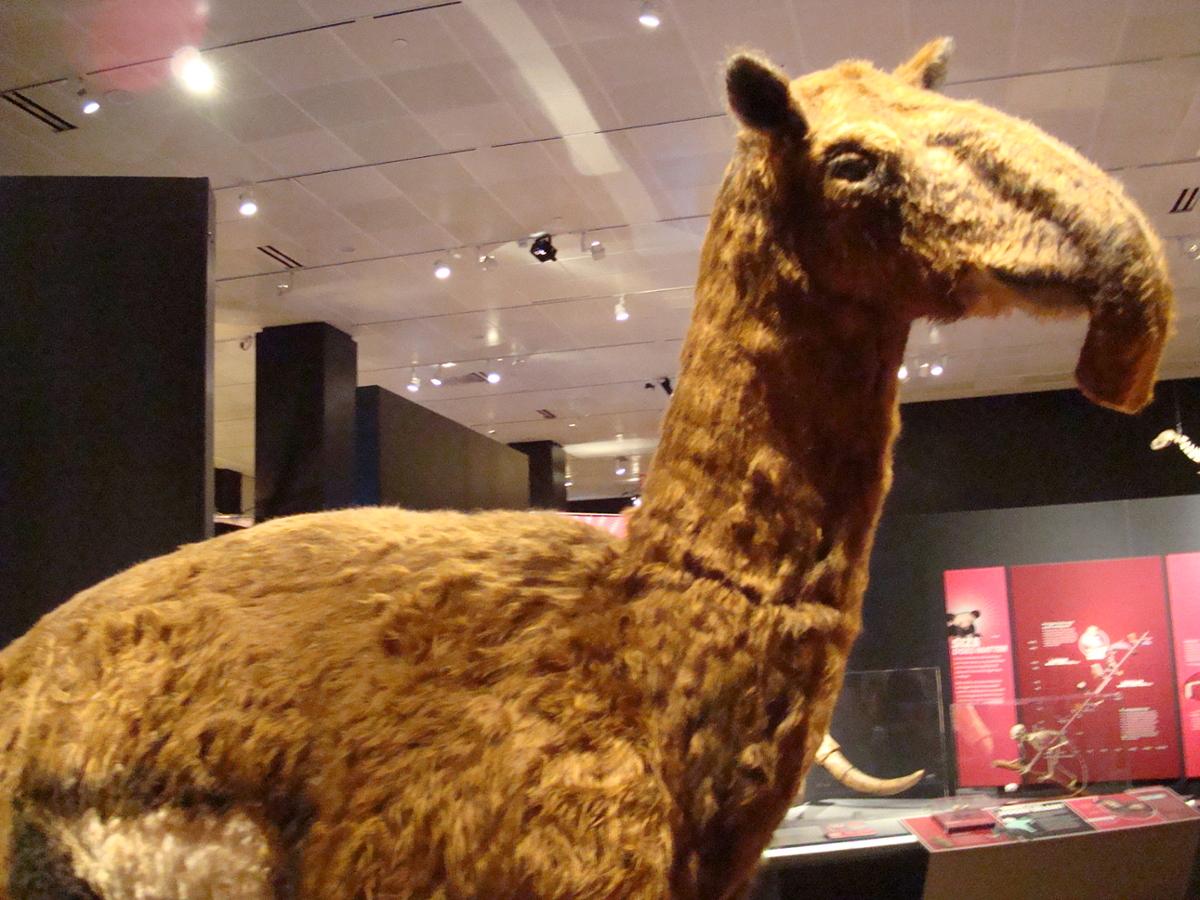Y: Have you ever heard of the Macrauchenia, Don?
D: Isn't that a dance?
Y: No, that's the Macarena. I'm talking about an extinct mammal that looks like...well it has a body like a humpless camel, the feet of a rhinoceros, and a snorkel-like nose about half as long as an elephants.
D: Yaël--you're kidding.
Y: Charles Darwin said it was one of the strangest animals ever discovered. Scientists suspected it was some type of South American ungulate, but weren't quite sure what it was.
D: Ungulates are animals with hooves, right? Does that mean it was related to camels and deer?
Y: That's what no one could figure out. Scientists thought South America's ungulates, which disappeared about ten thousand years ago, were related to mammals such as horses rather than elephants and other species. The trouble was, the fossils they had didn't contain any good DNA for comparison.
D: What did they do?
Y: They decided to use collagen instead. It's a structural protein found in all animal bones that can survive for eons under all sorts of conditions, up to ten times longer than DNA. The directions to make collagen come from the DNA, so each species has its own distinct collagen built of a series of smaller pieces called amino acids.
D: So, the scientists compared differences between the collagen of current and extinct species?
Y: Yes. They used a variety of fossil samples, including two discovered by Darwin. They found that Macrauchenia is most closely related to horses, rhinos and tapirs. They also confirmed that their ancestors moved from North to South American over sixty million years ago.
D: I think this is a discovery worth dancing about.










